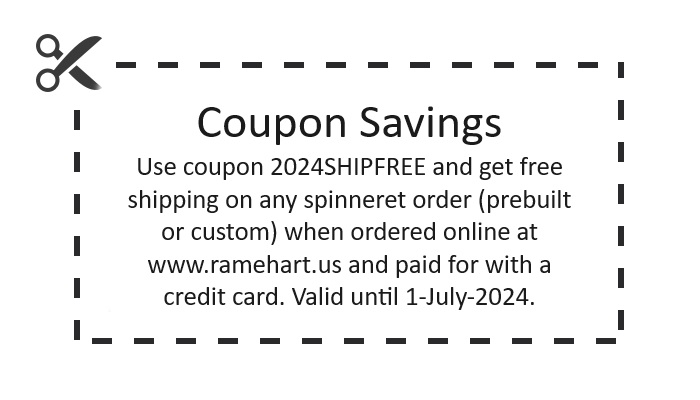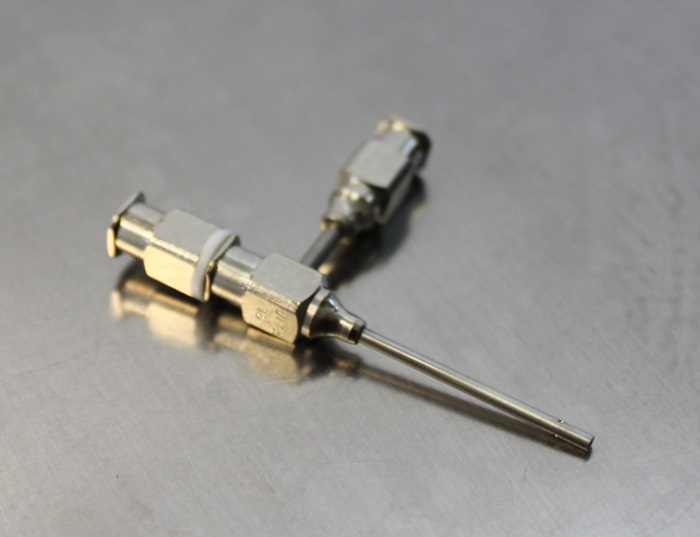|
Visit our website at
www.customspinnerets.com
|
|
Coaxial Electrospinning for Food Packaging Applications |
|
Nanofibrous materials produced via coaxial
electrospinning can enhance food packaging in a variety of ways:
1. Barrier Properties: One of the primary advantages of nanofibrous materials is their high surface area to volume ratio and fine pore structure. This enables them to provide excellent barrier properties against moisture, oxygen, and other gases, which are key factors in food spoilage. By incorporating layers of nanofibers into packaging materials, the shelf life of food products can be extended by reducing the rate of deterioration caused by exposure to air and moisture. Naturally, it's imperative that materials used to produce nanofibers for this application are both nontoxic and biocompatible. 2. Active Packaging: Coaxially electrospun nanofibers can be engineered to release active substances, such as food preservatives or antioxidants, to inhibit microbial growth and oxidative reactions in packaged foods. Here are some examples of how engineered nanofibers can release these active agents: a. Core-Shell Structure: In coaxial electrospinning, active agents can be encapsulated within the core of the nanofibers, while the shell consists of a protective polymer layer. The release of active agents can be controlled by the diffusion of molecules through the shell material. For example, antimicrobial agents like silver nanoparticles or essential oils can be encapsulated in the core to provide controlled release and inhibit microbial growth in packaged foods.1
b. Surface Modification: Nanofibrous materials can be surface-functionalized with active agents or coatings that slowly release antimicrobial or antioxidant compounds over time. For instance, nanofibers can be coated with chitosan, a natural polysaccharide with antimicrobial properties, to create packaging materials that inhibit the growth of bacteria and fungi on the surface of food products. Amna et al. (2014) introduced an innovative food packaging solution composed of biodegradable polyurethane (PU) with antimicrobial properties, specifically targeted for meat and meat products.2 Unlike traditional methods that involve directly mixing antimicrobial compounds with food, this approach involves incorporating virgin olive oil and zinc oxide into packaging materials via electrospinning. This incorporation inhibits microbial activity (e.g., Staphylococcus aureus and Salmonella typhimurium) primarily at the surfaces of the packaged food, where it tends to localize. c. Responsive Nanofibers: Stimuli-responsive nanofibers can release active agents in response to specific environmental conditions, such as changes in pH, temperature, or moisture levels. For example, pH-sensitive nanofibers could release antimicrobial agents in acidic conditions commonly found in spoilage-prone foods like fruits and vegetables. Recent advancements in polymeric materials for biomedical and food packaging applications, particularly focusing on the emergence of smart biomaterials that dynamically respond to environmental changes offer potential as versatile smart biomaterials, including fibers, surfaces, and hydrogels.3 d. Sensory Indicators: Nanofibrous materials can also be engineered to incorporate indicators that change color or release specific odors in response to changes in the freshness or quality of packaged foods. These indicators can provide visual or olfactory cues to consumers, alerting them to potential spoilage and helping to reduce food waste. Researchers in Turkey developed an electrospun nanofiber halochromic pH sensor film using curcumin, chitosan, and polyethylene oxide to monitor chicken freshness, with results indicating that the film's color changes from bright yellow to reddish upon spoilage, allowing for real-time detection even by untrained consumers, while surface pH changes and TVB-N concentration measurements demonstrated the film's efficacy in visualizing chicken spoilage.4 Overall, nanofibers produced via coaxial electrospinning offer a versatile platform for designing innovative food packaging solutions that enhance shelf life, maintain food safety, and improve consumer experience. Notes |
|
Coupon Savings |
If you made it this far, we'd like to
treat you to free shipping. Use the following coupon on your next
spinneret order.
 Fine print: Limit one coupon code per order. Limit one use per customer. To receive the discount, order must be placed online at www.ramehart.us and paid for with a credit card. Enter the coupon code during checkout. Coupon valid until 1-Jul-2024. |
|
Regards,
Carl Clegg |

